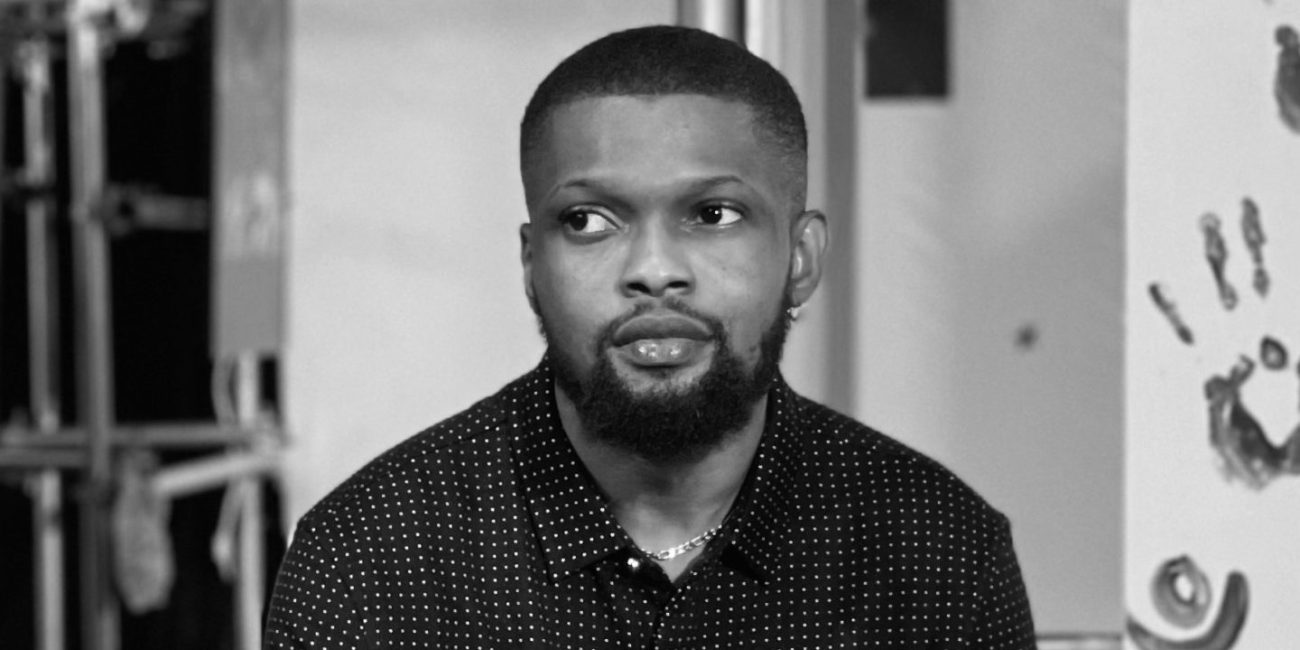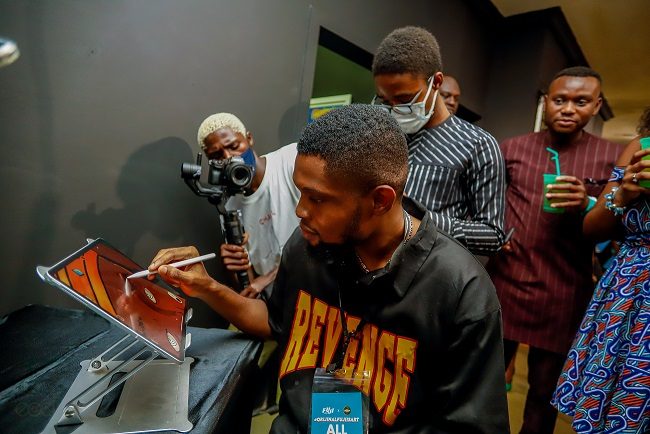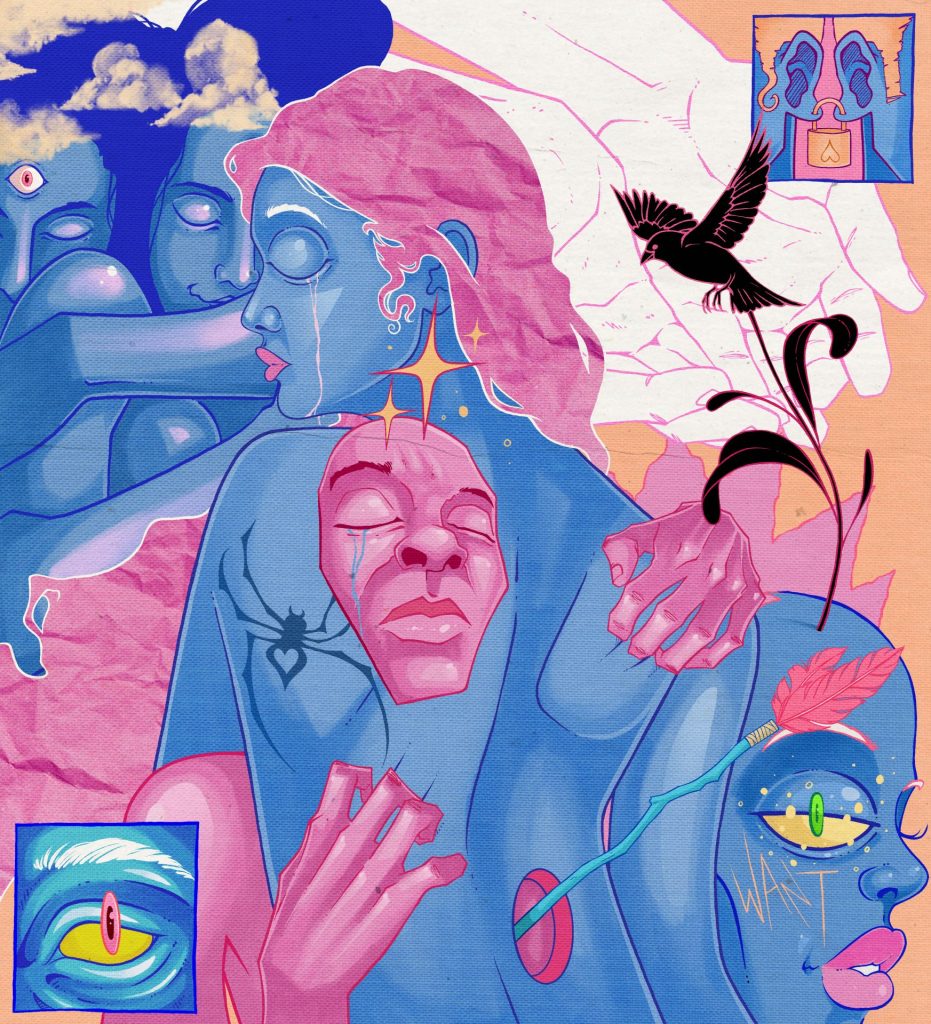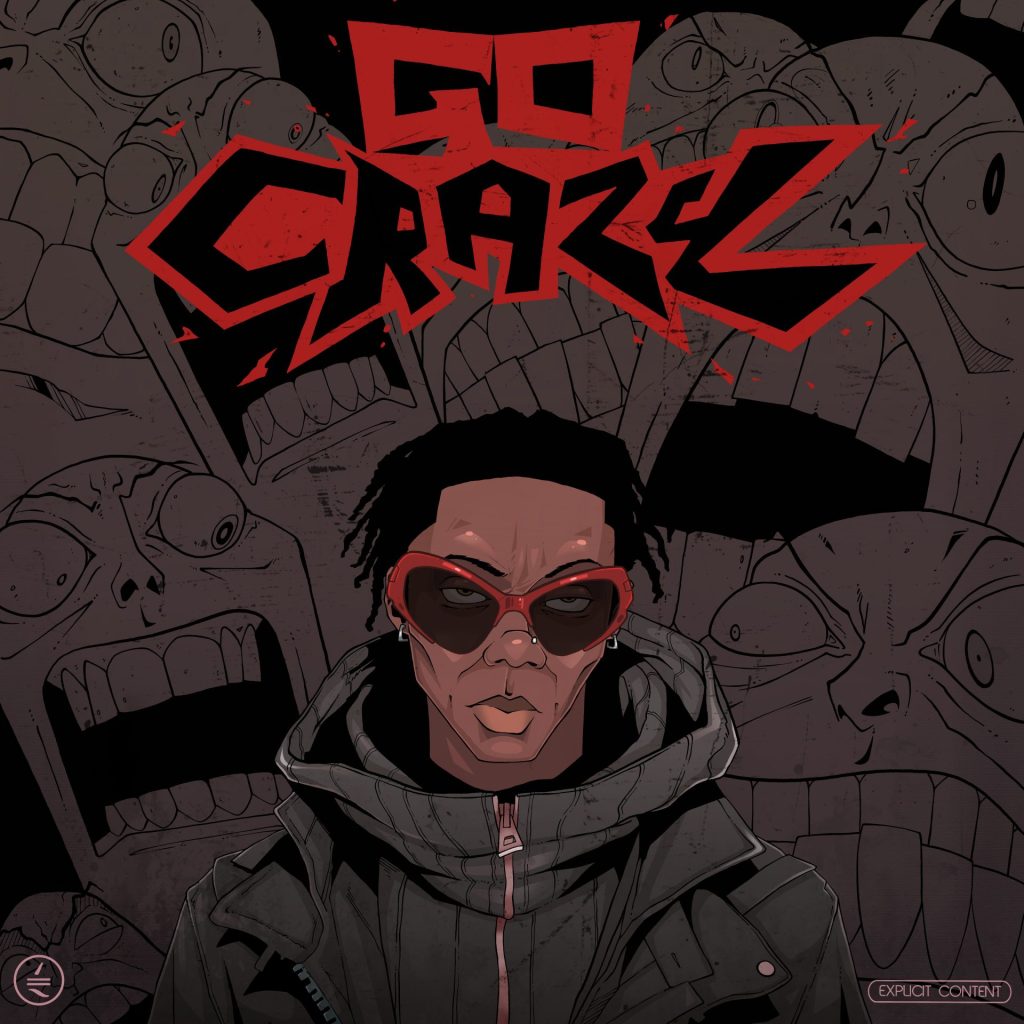
How Bidemi Tata is Boldly Reimaging Reality through Digital Art.
When we think of design innovators shaping modern African identity, Bidemi Tata comes up again and again. Whether it’s the bold branding for music rollouts or his emotionally resonant digital exhibits, Bidemi doesn’t just design, he reimagines.
“I used to draw superheroes, “It was my way of creating toys I couldn’t get.” Even from his childhood, Bidemi wasn’t just creating; he was translating worlds. He reflects on how fine art teachers dismissed his drawings of things like buckets with wings, simply because they weren’t drawn the way it was asked. It was limiting, but that’s where his imagination thrived.

“If I were to draw the Coat of Arms, I wouldn’t draw it the way it is. I’d add a bit of myself,” he says. “I always want to reimagine things.”
If you enjoyed the article on “The Graphic Designers, transforming the music scene,” you would understand that Bidemi Tata is highly requested. When asked about what he felt, about the most liked and recurring comment ‘there is no list without Bidemi Tata’, He responds humbly, “It feels really good. When I was younger, my unorthodox style wasn’t always appreciated. It means a lot now that people are resonating with it.”

A creative to the core, Bidemi admits solitude fuels his process: “When I’m alone, I think in pictures. It’s like a constant conversation in my head. Sometimes the ideas get too much, so I write or sketch them down. I’m not the most social person, maybe because I’m always thinking.”
So how do you navigate networking? He laughs as he admits, “Networking is hard o. I’m not the best at small talk. But luckily, I meet like-minded people, and the conversation just flows. It’s necessary, though, even if it drains me.” He shares a beautiful full-circle moment. He had seen Blaqbonez at events and had always been a fan of his work, but they never got to speak. A few years later, Blaqbonez reached out to him, saying he had admired his work for a long time and was looking forward to working together.

The Fuji is Art, as well as the Laspark Project, solidifies the moment of reflection and gratitude for how far Bidemi Tata has come as a digital artist and a motivation to keep on going.
Particularly, the Fuji is Art Project, we wanted to introduce Fuji to a younger generation using digital art,” he explains. “It was 2020/2021. Also, my mom, who loves Fuji. This also influenced the partnership with LASPARK to use public spaces around Lagos for outdoor installations. From the Mainland to the Island, people showed up. My parents came too and were so proud.
It was the first time I really felt seen.” That project laid the groundwork for more collaborations. Seeing LASPARK support our vision was validating. I was balancing art and school, and I really felt encouraged.”

When asked at what point, does he thinks a commissioned work is completed and ready to go out, he responds saying: Art is never finished. Truly, every creative is familiar with the creative’s curse. Bidemi Tata explains the feeling of always wanting to make a few modifications or adjustments. “I sent a work in, and at some point I thought to myself, maybe I could have added some things, but it has been sent in and I can’t recall it. This year, I’m revisiting 10 old personal projects to reimagine them with everything I’ve learned over the years.”
As we conclude, we discuss the kind of legacy he would love to leave behind. He passionately expresses, “What I hope to leave behind,” he says thoughtfully, “is a world where digital art is respected. Not just loved, but truly seen. Growing up in Nigeria, I didn’t have many role models doing this. People would call my work cartoons; it felt dismissive. I want young artists to see someone like them making it work from Nigeria.”
For Bidemi, legacy means building a timeline full of great digital artists. “If not for me, then for those coming after me. In 100 years, I want a child to stumble upon my work and say, ‘That’s the kind of artist I want to be.’”